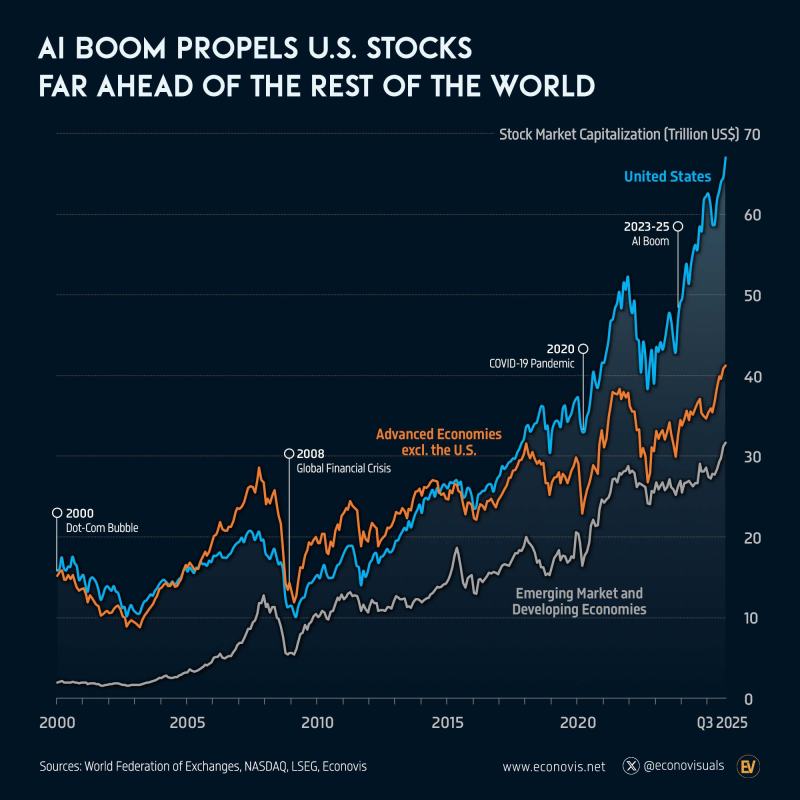⬤ Recent data from Econovis reveals how the AI explosion has sent U.S. stocks soaring past international competitors. American equities climbed 72 percent between December 2022 and October 2025, while the top ten U.S. tech stocks rocketed up 218 percent during the same stretch. The numbers show U.S. market cap shooting higher compared to other developed nations and emerging markets, proving how AI-related gains have completely reshaped the global investment landscape.

⬤ The U.S. market started pulling away from global stocks back in 2018, and that gap has only gotten bigger since. American market cap more than doubled, jumping 109 percent from $32.1 trillion in 2017 to $67 trillion by October 2025. The steepest climb happened during the 2023–2025 AI surge. What's really eye-opening is that just ten major tech companies drove over half of this growth, showing how much power AI infrastructure and chip makers like NVDA now have in the market.
⬤ Other developed economies saw much smaller gains by comparison. Their combined market cap went from $30.2 trillion in 2017 to $41.3 trillion in 2025, up just 37 percent. Emerging markets grew from $18.9 trillion to $31.7 trillion since 2017, marking a 68 percent rise. The gap is clear: U.S. stocks keep hitting new peaks while other regions follow much slower growth patterns. The data shows a global market increasingly controlled by American tech and AI companies.
⬤ This growing divide between U.S. markets and everyone else points to a fundamental change in who leads global equities. American tech firms keep posting massive gains that shape investor expectations, valuations, and where money flows across borders. As AI adoption picks up speed, the concentration of market value in the United States will likely play an even bigger role in shaping sector trends and the broader global economy.
 Marina Lyubimova
Marina Lyubimova

 Marina Lyubimova
Marina Lyubimova


